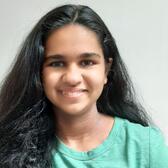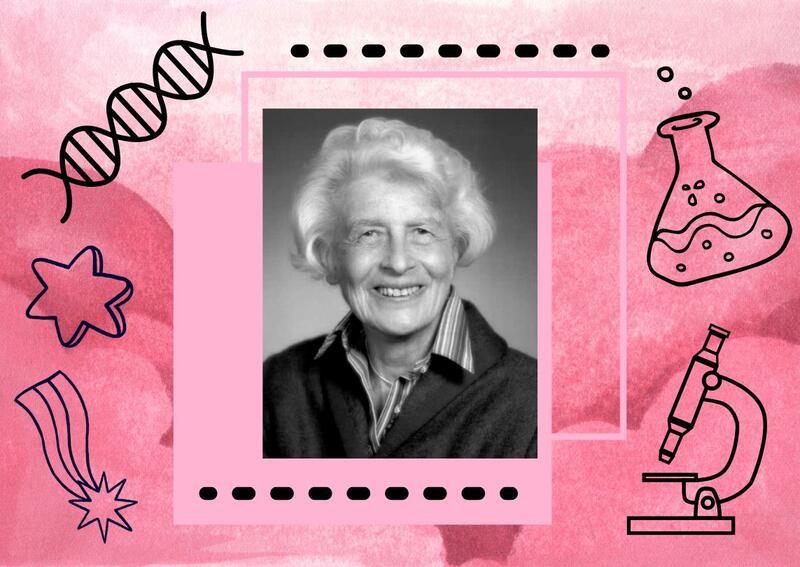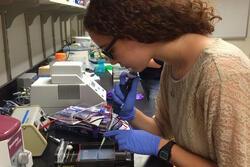Women in STEM: Gertrude Goldhaber and Me
I march up the curved stairs and step into the formidable, Romanesque-style, math building as its bell tower chimes the hour. This building has stood for one hundred years, unchanged externally, but internally changed by the students that walk its halls, as there now are women among them as well. I hurry inside and find my way up the stairs to my math classroom. Math has always been an interest of mine and I’ve been attending math clubs in this very building from a young age. I’ve been lucky enough to be close friends with other girls that love math, so I have never really felt the gender gap in STEM (science, technology, engineering, and math), but seeing how few girls and women are in my current class (through my school’s concurrent enrollment program) at the University of Illinois has opened my eyes to how real it is, even today.
For so many years, women have been denied the chance to study or work in STEM, because of the false idea that they could not be as good as men at the logical thinking required for these fields. Although World War II provided more opportunities for women to work while men were fighting in the war, women were expected to resume the role of staying home and focusing solely on raising families at the conclusion of the war. When they did work, they were still prevented from receiving the most superior and high-paying jobs: women were allowed to be secretaries to the men working in STEM, or assistants to their husbands, but they were belittled if they wanted to take charge of their own research. While women in STEM are no longer explicitly denied chances just for being women, they still face bias and the issue of unequal representation in STEM. Despite being 50% of the population, women make up only 28% of STEM professionals. In my math class of about forty students, there are only a handful of women. This is a problem we need to fix. If women aren’t given equal opportunities in the workforce, society cannot benefit from the breakthroughs and discoveries they would make if only given the chance. It is important to make sure that everyone gets the chance to succeed and that all perspectives get heard. Yet, although there’s still so much work to be done, I realize that I’m fortunate to just be able to stand here today, to be able to be in this building, to attend this math class, and to participate in the discussion. I owe this opportunity to the women of the past that fought hard to pave the way for me and for others.
One of these women, who did much of her great work from the very campus on which I now stand, was Jewish physicist Gertrude Goldhaber. Born in Germany in 1911, Goldhaber was a university student when the Nazis came to power. It quickly became impossible for her to continue her work, and in 1935, she left for London and eventually the United States. Yet, even when her home was settled, her job was not. The University of Illinois refused to hire her since her husband already worked there, leaving her with only one limited option to do research: working at her husband’s lab without pay. She later worked at other institutions as well, and throughout her career, made several important contributions to the fields of nuclear motion and nuclear structure, becoming the third-ever female physicist to be elected to the National Academy of Sciences in 1972.
In addition to working on her physics research, Dr. Goldhaber also worked on creating more opportunities to help other women succeed in STEM. She created resources and established institutions for everyone in the community, to make access to a STEM career more widespread for women. For example, while working at Brookhaven National Laboratory, she founded Brookhaven Women in Science, which connects women in science through workshops and lectures, making them feel less isolated and providing mentorship and support. Additionally, Dr. Goldhaber personally reached out to and encouraged individuals of all kinds in STEM, including men. This reveals something about the nature of creating an inclusive environment. Encouraging women is not about encouraging women to succeed instead of men. It is about creating an environment that is overall less competitive and exclusive, and more welcoming and supportive for all. In such an environment, people no longer have to prove they belong or are good enough to be there. And so, without having to constantly worry about proving themselves, women might be able to relax and feel more welcomed and confident in STEM.
I try to apply Dr. Goldhaber’s strategies in my own experiences. I’m in the math club at my school and, when math competitions approach, we often get asked to spread the word. I love talking to, laughing with, and learning from my team, and of course, the larger the team, the more fun the competition. So instead of just asking the people whom I know are likely to say yes, I try to invite everyone I think might be interested in competing and encourage them to participate even if they don’t feel like they are good at math or belong on the team—because that doesn’t matter. The point of the team is to learn from one another, improve, and have more fun together. Just as Dr. Goldhaber wanted to personally encourage others, I too, try to personally invite others in the hope of creating a more fun and welcoming environment.
As Dr. Goldhaber said, “It is of the utmost importance to give a girl at a very early age the conviction that girls are capable of becoming scientists.” Thanks to her, I’ve been lucky enough to have that conviction and I hope that someday, as I try to follow in Dr. Goldhaber’s footsteps, I’ll be able to help ensure that girls younger than me have it too.
This piece was written as part of JWA’s Rising Voices Fellowship.






